30+ Sample Moving Packing Checklist
-
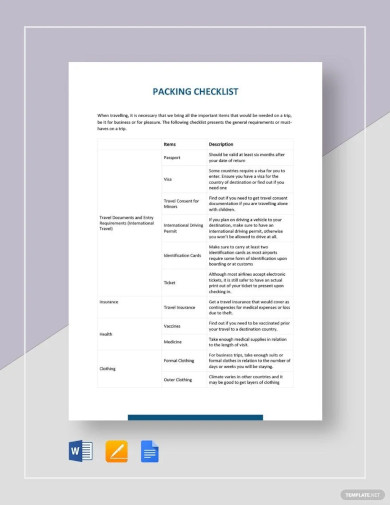
Packing Checklist Template
download now -
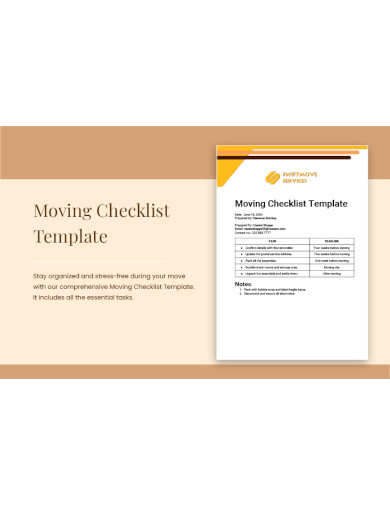
Moving Checklist Template
download now -
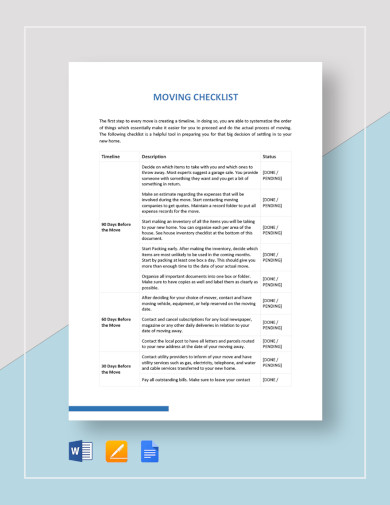
Sample Moving Checklist Template
download now -

Vacation Packing Checklist Template
download now -
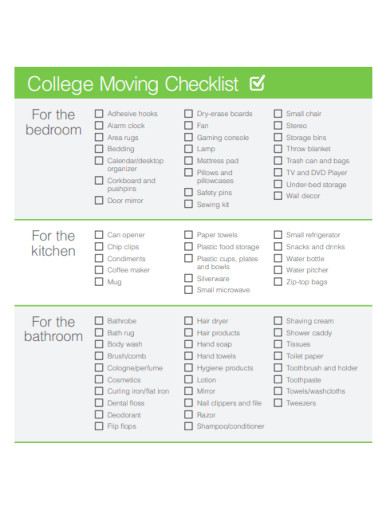
College Moving Packing Checklist
download now -
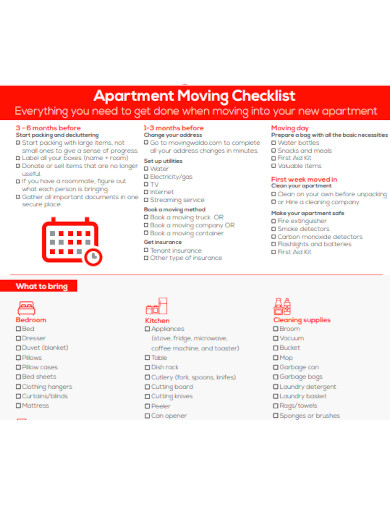
Apartment Moving Packing Checklist
download now -
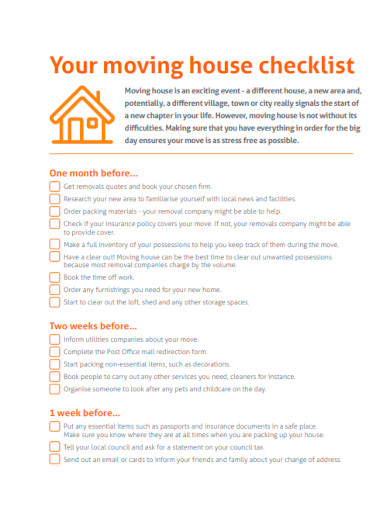
Moving House Packing Checklist
download now -
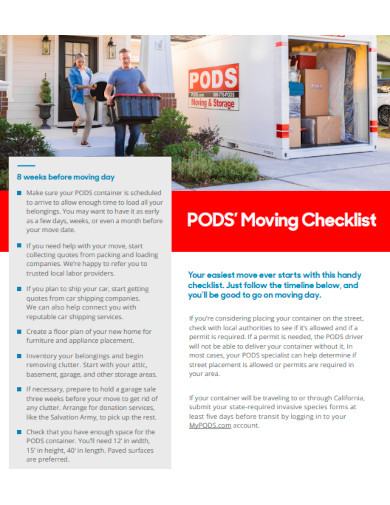
Moving Packing Checklist Template
download now -
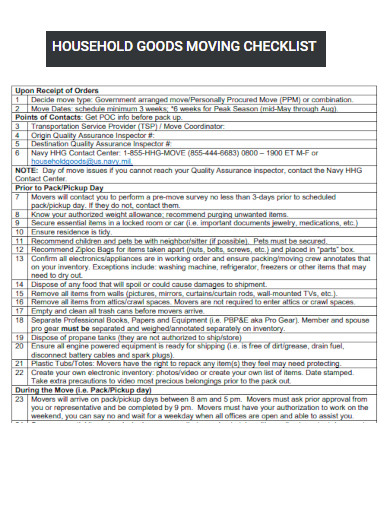
Household Moving Packing Checklist
download now -
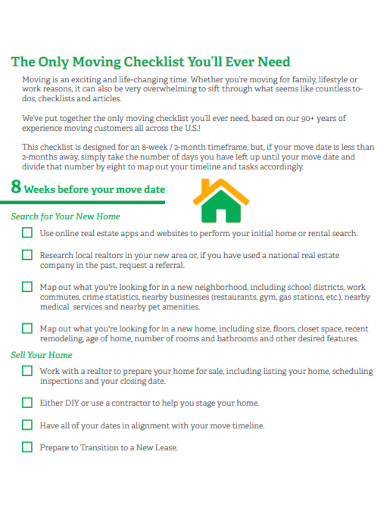
Basic Moving Packing Checklist
download now -
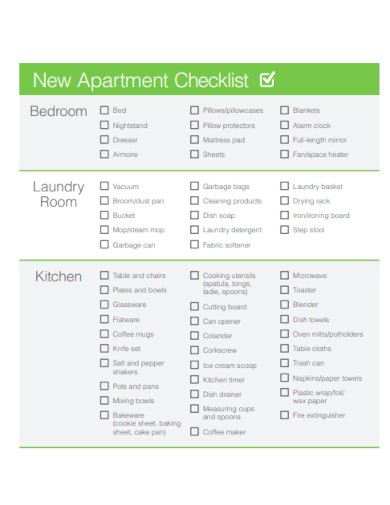
New Apartment Checklist
download now -

Moving House Checklist and Tips
download now -

Moving Hacks Packing Checklist
download now -
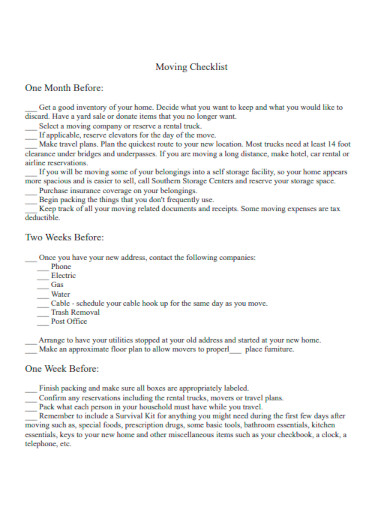
One Month Before Moving Packing Checklist
download now -

Week Before Moving Packing Checklist
download now -
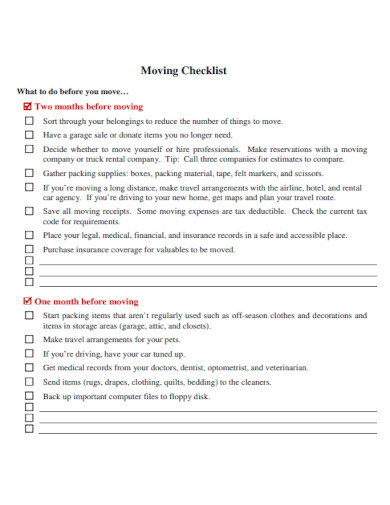
Moving Packing Checklist in PDF
download now -

Office Moving Packing Checklist
download now -
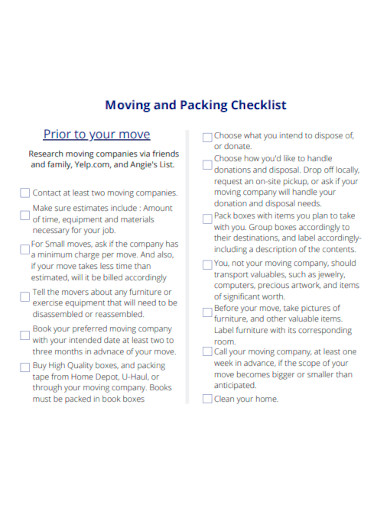
Moving and Packing Checklist
download now -
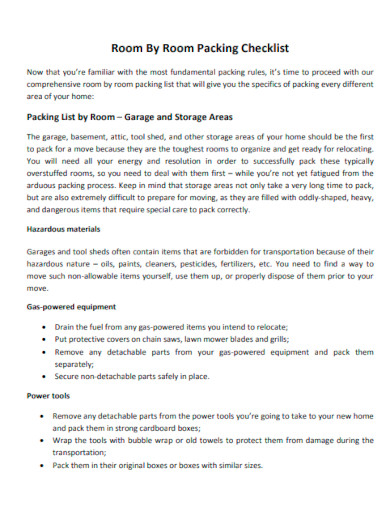
Room By Room Moving Packing Checklist
download now -
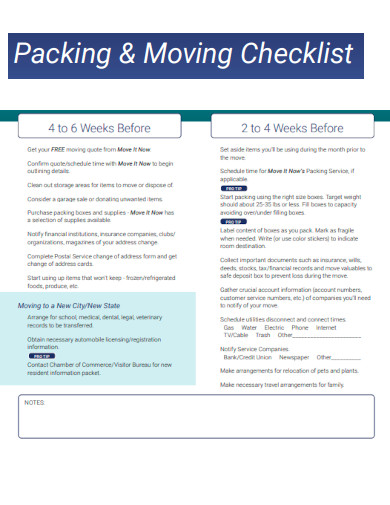
Packing and Moving Checklist
download now -
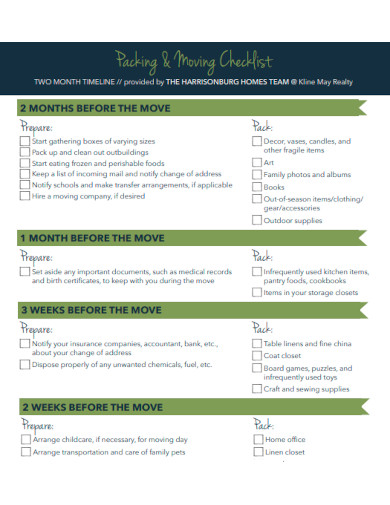
Two Month Timeline Moving Packing Checklist
download now -

Pre Packing Moving Checklist
download now -
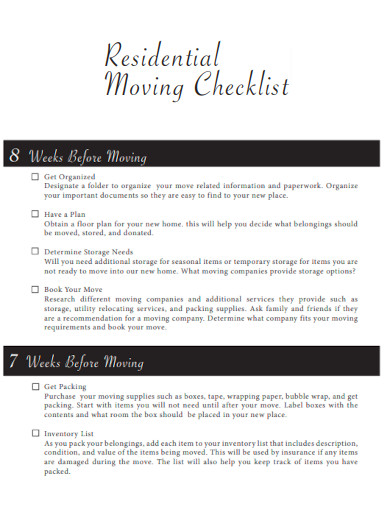
Residential Moving Packing Checklist
download now -
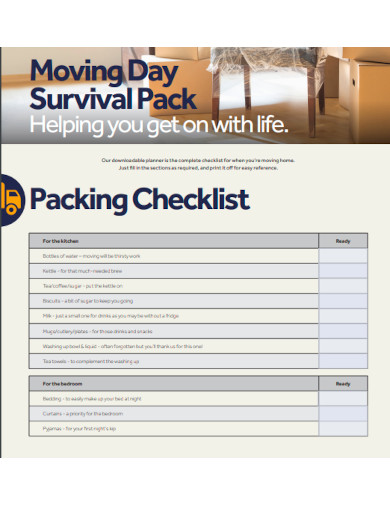
Moving Packing Checklist Example
download now -
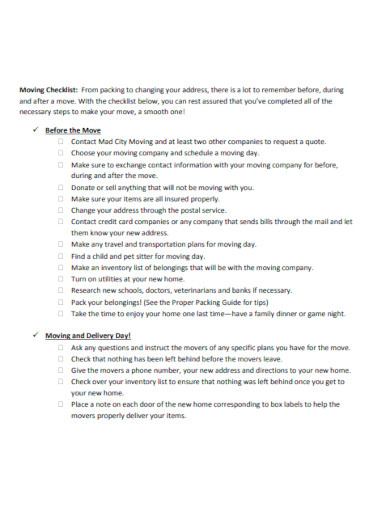
Simple Moving Packing Checklist
download now -
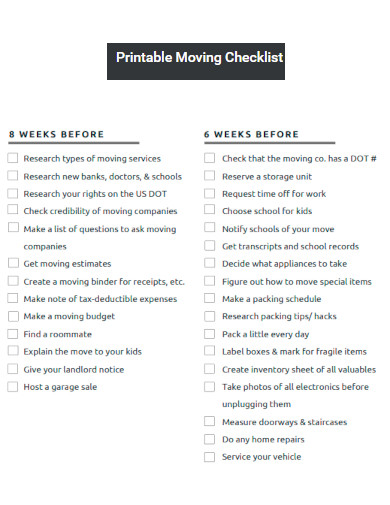
Printable Moving Packing Checklist
download now -
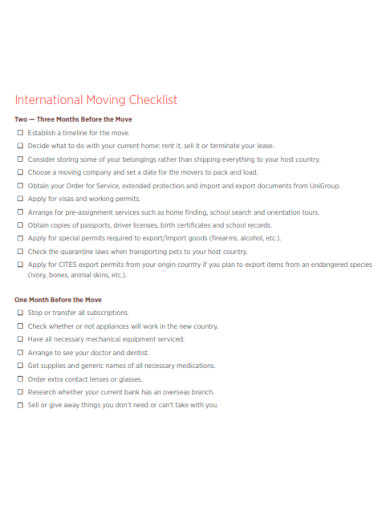
International Moving Packing Checklist
download now -

Office Relocation Moving Packing Checklist
download now -
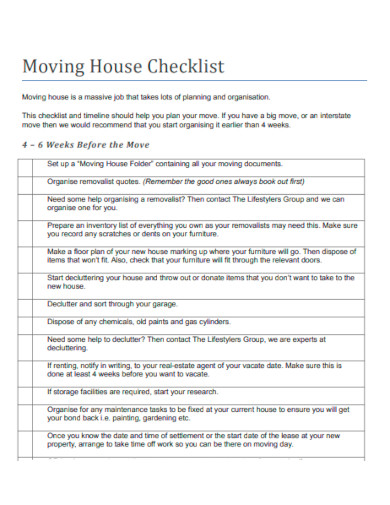
New House Moving Packing Checklist
download now -
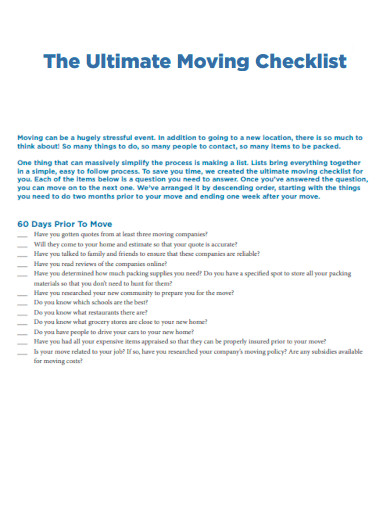
Ultimate Moving Packing Checklist
download now -
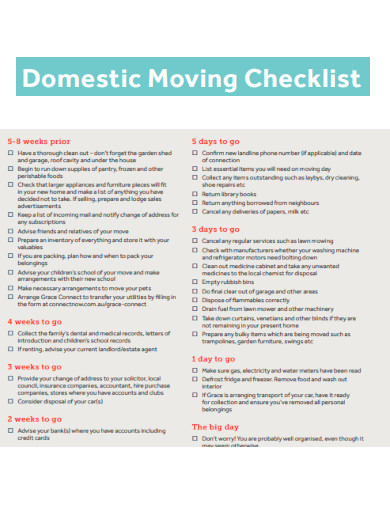
Domestic Moving Packing Checklist
download now
What Is a Checklist?
A checklist is an inventory list of items against which processes and procedures can be verified, inspected, or examined. From construction inspections to complex surgical procedures, checklists are used. They are applicable in every industry. Checklists are templates designed to execute routine tasks, validate a set of criteria, or compile data in a structured and organized manner. They regularly inspect operations or products to ensure the worker or inspector sees everything significant.
Benefits of a Checklist
A checklist is a manageable to-do list that the individual in charge must review before delivering work. It functions as a way to track what needs to be done and ensure that the completed work’s quality meets the specifications. Checklists can be created using paper and pen or among the numerous available software applications. Let’s examine the leading advantages of a checklist:
Tips Before Moving In
During a relocation, many issues can arise. With all the details and moving elements, no one-size-fits-all moving guide provides advice for every possible moving scenario. Different people will have specific needs or concerns, such as how to pack china for moving or transport valuable wood furniture or fragile heirlooms. Still, this general list of moving tips and techniques will be helpful in most cases. Examine this and prepare for a simpler, quicker, and easier relocation.
1. Get Rid of Everything
Packing all your belongings into cartons, bags, and other containers can be overwhelming. Minimize the amount of clutter as much as possible to make life simpler for yourself. Before packing a single package, ruthlessly eliminate unused or unnecessary items. You will have less to pack, less to move, and less to unpack, and you will be able to start fresh in your new home. Also, accumulate new addresses, rental application or purchase documents, moving contracts, and other records in one folder. If any questions arise during the planning stage or the actual transfer, you will have readily available answers (as well as forms of agreements, payment contracts, and more).
2. Pack in Advance as Much as Possible
Ideally, you will be informed of the transfer weeks or even months in advance, even if the final destination is unknown. Start by packing off-season items and non-essential items. If you are moving in the summer, you can prepare your winter coats in advance, books, and other rare articles. When it’s time to move, many of your belongings will already be packed, reducing your tension. Book if you need movers, rent supplies, or hire professionals such as painters or cleaners to work on your home. If it’s a prime moving season, waiting could mean paying a higher price or not being able to secure a truck or movers at all.
3. Plan Utilities for Your New Home
Contact your utility providers to schedule assistance at your new residence once the dates have been finalized. You don’t want to arrive there, exhausted from moving, only to discover that the electricity, water, or heat has been turned off. Plan it, and maintain a record of your requests in your moving folder. Request service pauses for your move-out date at your current residence concurrently. The night before the move, pack a change of clothing, a toothbrush, must-have stuffed animals or toys for the children, medications, paperwork, etc., into a suitcase or bag you will carry in the car, the truck cab, or the airplane. If disaster strikes and the moving vehicle gets lost, you will have at least a few necessities.
4. Invest in Equipment
A few days before the relocation, stock up on supplies. The last thing you want to do while packing, moving boxes, or ensuring everything is out of the home is run to the store. Consider renting larger moving equipment from a professional moving company. If you transfer frequently, it may be advantageous to purchase these tools. Ensure you have a furniture dolly, cushions or covers, and tie-down straps or rope for the move by purchasing, renting, or borrowing them.
5. Obtain a Vehicle With a Loading Ramp
As a do-it-yourself mover, you must have a vehicle with a ramp. It may be less expensive to rent a truck without a lift, but the inconvenience (and struggle) of lifting each box and piece of furniture into the truck will add hours to your move and sore muscles.
How to Find a New House
A solid strategy plan can help you narrow your home-buying search in order to discover the ideal residence. House hunting is identical to any other purchasing trip. If you determine precisely what you desire and conduct an investigation report, you will zero in on your desired home at the best price. These steps will guide you through the process of purchasing a property.
1. Determine the Type of New Home You Desire
Determine the style of residence that complements your personality. Do you favor new or established homes? A homestead or a multilevel dwelling? If you are considering a fixer-upper, ask yourself if you are genuinely handy or if you will need to budget for contractors. List the features you desire most in a home and distinguish between those that are essential and those that are optional. Identify three to four desirable neighborhoods based on commute time, schools, recreation, safety, and cost. Then, visit realtor.com to understand the homes in your price range and preferred communities. Utilize the results to rank your wants and requirements, allowing you to add and eliminate properties from the inventory sheets you wish to view.
2. Organize Your Financial Situation
Lenders typically state that you can afford a home that costs two to three times your annual income. Create a sample budget to determine how much you will spend on monthly accommodation. Only investigate financing once you’ve found a property and made an offer. Gather your financial documents and meet with a lender to obtain a prequalification letter specifying the maximum loan application amount you qualify for. The lender won’t necessarily consider the additional fees you’ll pay when you buy or your intentions to start a family or buy a new car, so shop within a comfortable price range.
3. Set a Moving Timeline
Do you have credit blemishes that will take time to remove? If you currently own a property, have you sold it? If you still need to, you must account for the time required to sell. If you are a renter, when does your lease expire? Do you anticipate a rise in interest rates soon? These variables will impact your purchase, closing, and relocation timing. Your future intentions may determine the type of residence you purchase. Are you searching for a starter home to upgrade in a few years, or do you intend to remain in the house for five to ten years? You may need to modify your expectations for a starter. If you want to start a family, ensure that your list of priorities will help you find a home, you will still adore in a decade.
4. Limit the Opinions You Solicit
It is normal to seek reassurance before making a significant financial decision. However, you are aware of the proverb about too many chefs in the kitchen. If you require a second opinion, choose one or two individuals. But stick to your list of wants and requirements so that your final decision is based on the criteria you’ve deemed essential.
FAQs
What is a checklist at work?
A checklist is a job aid that contains a list of duties or activities that must be completed within a specified time frame. Advanced checklists include additional requirements, such as tools, dependencies, and behaviors, that must be met to complete your duties.
What is the value of a checklist?
In two types of circumstances, checklists are intended to help us perform better and avoid making errors. In the first scenario, the complexity of the task makes it easy to neglect something.
What is the power of a checklist?
People can be better at their jobs, save time, and understand their function in the business process or procedure, resulting in the best outcomes. Checklists are most useful for repetitive tasks carried out in a predictable sequence.
Before you move, you must secure the services of a reputable moving company. Hiring professionals can facilitate a seamless relocation. This is not only for moving your products safely and with insurance coverage. This may include complete or partial packing and moving specialized items such as antiques and artwork. Are you prepared to relocate into your new dwelling? I wish you the best of luck in your new endeavor!
